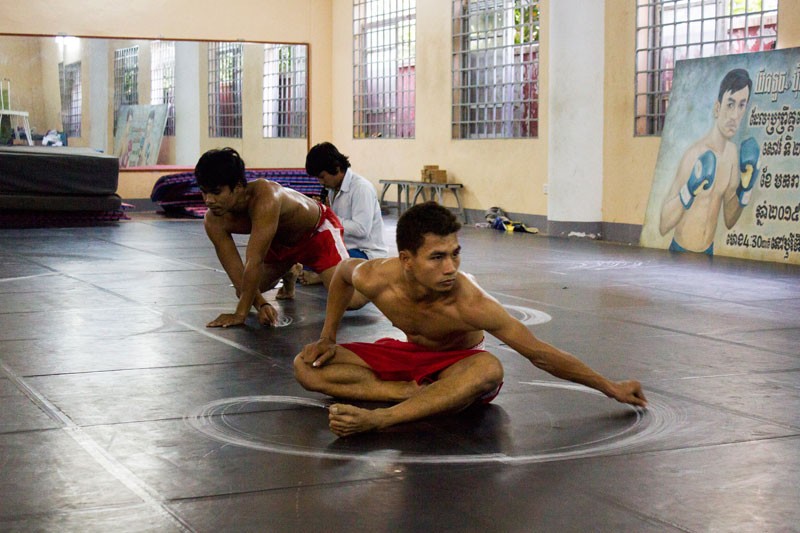The process of bringing choreographer Emmanuele Phuon’s latest dance to the stage has been a long one.
“It started with an exhibition of John Vink’s pictures, this was 10 years ago and that is the initial interest into boxing,” Ms. Phuon said on Wednesday, as the lighting and sound for two performances of the 15-minute dance on Friday and Saturday were being finalized at the Department of Performing Arts theater in Phnom Penh.

Her latest piece working with dancers from Amrita Performing Arts is titled “Brodal Serei,” and the form of traditional Cambodian boxing is the basis for the piece.
It is also a biographical dance based on Ms. Phuon’s conversations and friendship with boxer and Brodal Serei specialist Him Sarann, who she befriended more than two years ago while observing boxers at Phnom Penh’s Old Stadium.
“The whole dance is boxing moves,” Ms. Phuon stressed.
“Basically the vocabulary of boxing is very much there, it is a little bit codified, but not much…the material is boxing.”
Ms. Phuon credited American choreographer Yvonne Rainer with the basic idea behind transforming movements into dance.
“She is the woman who started in the ’60s that any movement is dance, walking is dance…. She is the one who started that,” she explained. “The minute you move, that is dance for me. When I did a previous piece on monkeys, it’s the same thing, primates move and their movement is dance. It could be applied to anything.”
Though Ms. Phuon and the project’s dramaturge Lim How Ngeang have been researching traditional Cambodian boxing since meeting Mr. Sarann, the trio has had only three blocks of rehearsals, spread out over the past year and a half.
Mr. How Ngeang described the time it has taken to prepare the piece for its first official performance as “fragmented,” due to Amrita’s limited financial resources.
“The last time we rehearsed this was in January. From then until now the dancers have been involved in other projects,” he said, which has presented issues of continuity, but also opportunities to modify the final product.
The rehearsals in January culminated in a performance on February 6 that was open to the public.
Ms. Phuon said that very little about the performance had been changed since then, apart from deciding to bring in a “sound designer,” Zai Tang, who put together a track to set the mood for the dance, composed of “found sounds” that he recorded. The dance will also be accompanied by musicians playing a Cambodian flute and drums, and clips from an interview Ms. Phuon conducted with Mr. Sarann.
“There are some specific scenes within the narrative of the boxer’s life that lent well to creating a soundscape,” said Mr. Tang, a British-Chinese artist based in Singapore, adding that his role in the piece was like “trying to bring the audience into [the boxer’s] mind.”



